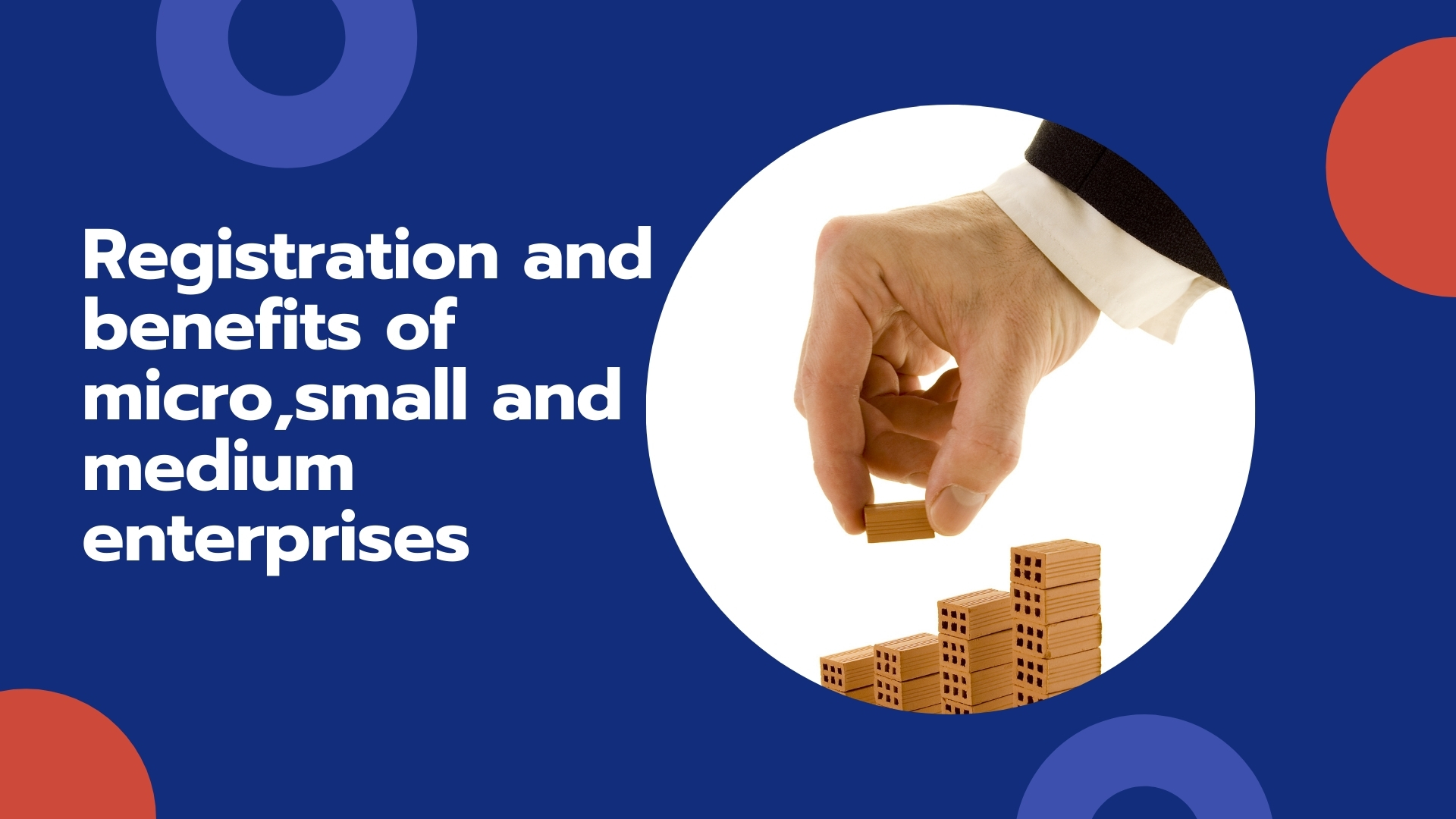Micro, Small, and Medium Enterprises (MSME) is an acronym for Micro, Small, and Medium Enterprises. The MSME sector employs 45 per cent of India's total industrial workforce, produces 50 per cent of the country's total exports, and employs 95 per cent of the country's total industrial units, producing over 6000 different goods (As per msme.gov.in). When these industries expand, the country's economy as a whole expands and thrives. Small-scale industries, or SSIs, are another name for these businesses. 1. FM's Major Announcement for MSME-Measures On the 13th of May, 2020, global tenders for up to Rs. 200 crore were announced for MSMEs. The government is broadening the scope of global tenders for MSMEs. To protect MSMEs from unfair competition from foreign companies, the government has decided to take a major step toward self-reliance by prohibiting foreign companies from bidding on government procurement tenders worth more than $200 million. This step will provide a significant boost to medium-sized businesses in India, which face stiff competition from foreign players. Through funds of funds, MSMEs will receive a total of 50,000 crores in equity injection. The government intends to establish Funds of Funds with a corpus of Rs. 10,000. MSMEs with growth potential and viability would benefit from the corpus, which would give equity funding. This approach will help MSME size and capability grow, as well as promote MSMEs to list on major stock exchanges' main boards. 3 trillion rupees Automatic loans for businesses and SMEs with no collateral There is some respite for those MSMEs who were already working prior to the lockout and were taking out loans from banks/NBFCs under the standard category and are now facing cash shortages as a result of the shutdown. For those MSMEs, to resume operations, i.e., to begin purchasing materials, paying wages/salaries, and making payments to vendors etc. this emergency credit facility As of February 29, 2020, they can borrow up to 20% of their total outstanding credit. Eligibility. Borrowers with outstanding debts of up to Rs. 25 crores and a turnover of up to Rs. 100 crores are eligible. Tenure. The loan would be for four years, with a 12-month grace period on principal repayment. Guaranteed credit of 100 percent. Banks and NBFCs will be covered for both principal and interest with a 100 percent credit guarantee. Validity. This programme is available until October 31, 2020. (Chances to extend up to dec 20 ) Subordinate debt worth 20,000 crores for strained MSMEs. MSMEs in distress require equity support. The GOI would support Rs. 4000 crore for functioning MSMEs that are NPA or stressed. To the CGTMSE The Banks will receive some support from the CGTMSE. Banks will provide debt to MSMEs' promoters, which the promoter will then invest in the unit's equity. 2. What is the difference between a micro, small, and medium business? The existing MSME classification system was based on criteria such as plant and machinery or equipment investment. As a result, in order to benefit from MSME benefits, MSMEs must limit their investment to a lower level, as mentioned below: as said farther down: Because they are unable to extend their firms any farther, these lower boundaries are destroying the will to grow. In addition, there has been a long-standing need for the MSME categorization to be revised so that they can continue to benefit from MSME benefits while expanding their operations. The government has now changed the MSME classification under the Aatmanirbhar Bharat Abhiyan (ABA) by including composite criteria for both investment and annual turnover. In addition, the MSME definition no longer distinguishes between the manufacturing and service industries. This removal will bring the sectors closer together. The new MSME classification is shown below, where Both investment and annual revenue should be taken into account when choosing on an MSME. Please take heed of the preceding. The updated definition will take effect on July 1, 2020. The government has issued revised criteria for MSME classification. 3. Fill out an application: i.To register a small or medium-sized business, the owner must complete a single form, which can be completed both online and offline. ii. If a person wants to register for many industries, he or she can do so individually as well. iii. To complete the registration, he or she must complete a single form, which can be found on the website given below. iv. The documents necessary for registration are shown below. Authorized Person's Aadhar Card (I.e. Proprietor, Any Partner, Any Director) Authorized Person's Social Category Types of Businesses, Names of Businesses ENTREPRENEURSHIP PANEL Plants are located at the registered address of the business. Commencement Date: Bank Account Information The number of people employed, the amount of money invested in plant and machinery/equipment, and the amount of money turned over. (Note: The cost of plant and machinery should be used instead of the depreciation value.) Code for Classifying Industries in the United States (NIC Code)
Also, read: udyam registration at a reasonable cost
4. Trade, small-scale manufacturing, and service industries benefit. a. collateral-free loans: The government has implemented a number of measures for MSME/SSI that allow them to obtain loans without having to put up any collateral. The Credit Guarantee Trust Fund Scheme, which is one of the top MSME registration benefits, is a joint endeavour by the Government of India, SIDBI (Small Industries Development Bank of India), and the Ministry of Micro, Small, and Medium Enterprises to provide collateral-free loans. For small business owners, this is by far the best MSME registration benefit.





